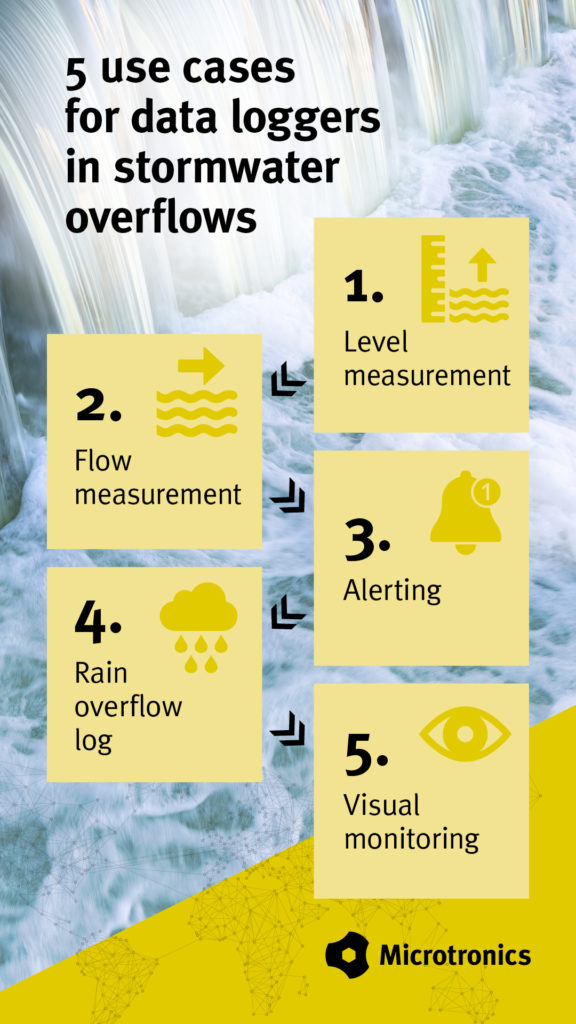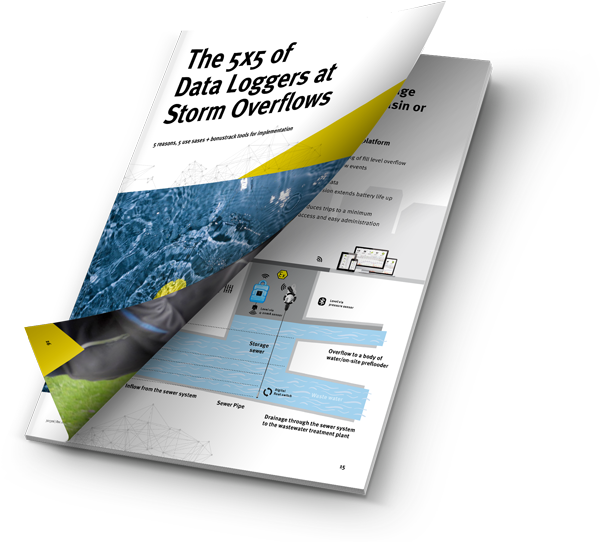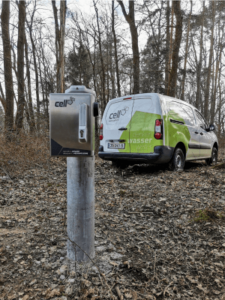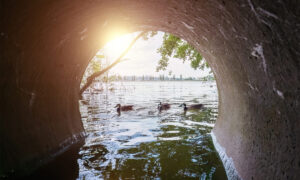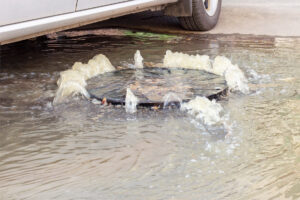Data loggers bring many advantages in combined sewers and storm overflows. The following five use cases show you practical applications that have already been tested in real-world use.
1. Level measurement
Pressure or radar sensors are used to determine the water level in the sewer and in the stormwater overflow basin. The level is measured in regular intervals, for example every 10 seconds. Once a day, the measured values are transmitted to the cloud.
Since the water level does not change so drastically under normal conditions, it is sufficient to transmit the data daily. In case of a heavy rain event, the rapid rise of the water level and the reaching of a predefined threshold value, it makes sense to transmit the measured data in shorter intervals to enable a quick implementation of measures.
By regularly measuring the level and its change as well as the implemented water quantities (impoundment frequency, knockdown frequency, impoundment height), the relevant measured variables are documented.
2. Flow measurement
In addition to the level in the sewer and in the stormwater overflow basin, the measurement of the flow rate at basin sills is important information.
In the case of the outfall and receiving water, the quantity of the flow is interesting to determine the actual overflow in the event of an incident in the stormwater overflow basin and the quantity of the overflow into the water body, respectively.
3. Alerting
When an event occurs, such as reaching a defined level or the overflow of a stormwater overflow basin, automatic alerts are sent, for example via text message.
This means enormous time saving for the personnel. Only measuring points, which have sent an alert must be checked and measures, such as taking a sample or loosening a blockage, must be taken. By taking a sample from the drain, it is possible to determine how many pollutants are actually present in the wastewater, which has been heavily diluted by rainwater.
4. Rain overflow log
In many countries there is a reporting or logging obligation for critical events. To meet this obligation in a convenient and time-saving way, platforms automatically create rain overflow logs from the recorded data and send them to the responsible people or authorities.
5. Visual monitoring
In addition to the monitoring of stormwater overflows with measured values and figures, the visual monitoring of sometimes difficult to access building structures is becoming more and more popular. A camera is mounted at the stormwater overflow and regularly takes a photo – especially in case of an event. This way, the situation on site, for example in an underground stormwater overflow basin, can be pre-estimated in the office.
Autonomous cameras can be installed in the stormwater overflow basin at critical points.
Rain makes the access more difficult. Therefore, it is helpful to get an overview of the situation with a photo. Access to underground stormwater overflow basins is difficult for employees because of occupational safety and is only possible with the appropriate equipment and gas measuring devices.
Indirect dischargers – bonus use case
Regardless of stormwater overflows, indirect dischargers – e.g. factories, that must pre-treat their wastewater due to chemicals used, before they are allowed to discharge into the public sewer system – are a challenge for sewer systems.
Data loggers that measure water temperature, level and/or gauge can determine when such an indirect discharge has occurred. Due to the temperature differences in the large volumes of water, further measures may be necessary.
